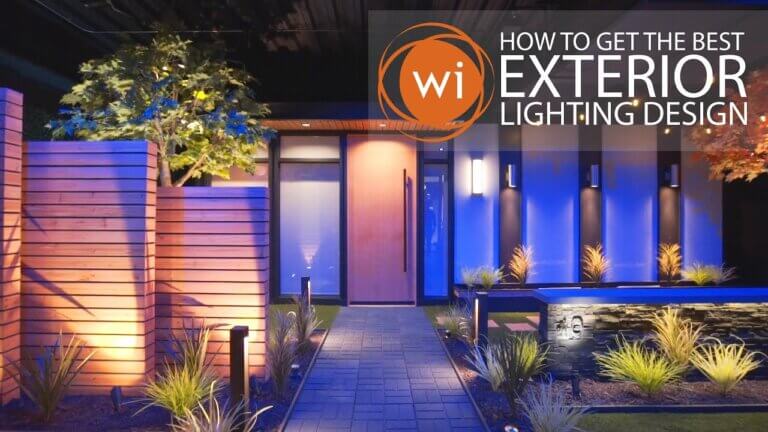Becoming an interior designer can be a rewarding career. It allows you to blend creativity with practicality.
Interior design is more than just decorating spaces; it’s about creating functional and beautiful environments. Many people dream of turning their passion for design into a career, but starting can be daunting. Understanding the basics and knowing the right steps can make the journey easier.
In this guide, we’ll cover the essential steps to help you get started as an interior designer. From education and skills to gaining experience and building a portfolio, we’ll provide a clear path to follow. Ready to turn your passion into a profession? Let’s dive in and explore how you can begin your journey in interior design.
:max_bytes(150000):strip_icc()/how-to-become-an-interior-decorator-452235_01-83ea096677ef4586999c4ab6a2e2b52e.jpg)
Credit: www.thespruce.com
Introduction To Interior Design
Interior design is the art of making indoor spaces beautiful. It involves choosing colors, furniture, and decorations. Good interior design makes a space look nice and feel comfortable. It also makes sure the space works well for its purpose.
Interior design improves how we use and enjoy a space. A well-designed room can make people feel happy and relaxed. It can also help people focus and be productive. Good design can even make a small room feel bigger. In short, interior design makes our lives better.
Educational Pathways
A degree in interior design is a great start. Many colleges offer these programs. You will learn about design principles. Color theory, space planning, and materials are key topics. Some programs include internships. These provide real-world experience. Associates degrees take two years. Bachelor’s degrees take four years. Both are good options.
Some places require a license to work. Others do not. Check your local rules. Certification can boost your career. The NCIDQ exam is popular. Passing this test shows your skills. Joining a professional group is also helpful. Groups like ASID offer resources. They also provide networking chances. These steps can help you stand out.
Essential Skills
Begin your interior design journey by developing a keen eye for detail. Study design principles and practice sketching layouts. Build a strong portfolio showcasing your skills and creativity.
Creative And Technical Skills
Creative skills are vital for interior design. They help you imagine and draw beautiful spaces. Good technical skills are also needed. You will work with design software. Understanding space and layout is key. Both skills help you create functional and beautiful designs. Practice and learning improve these skills.
Communication And Project Management
Communication is very important. You must listen to clients. Understand their needs. Explain your ideas clearly. Good project management skills are also needed. Keep track of time and budget. Work with different teams. Organize tasks and meet deadlines. These skills ensure your projects run smoothly.
Credit: m.youtube.com
Building Your Portfolio
Create sample projects to show your design skills. Use different styles for each project. This helps to show your range. Focus on details like color, space, and furniture. Take high-quality photos of your work. Write short descriptions for each project. Explain the design choices you made. Make sure your projects look professional.
Create a website to display your work. Choose a simple design for your site. Add a portfolio section with your sample projects. Use high-quality images. Write clear descriptions for each project. Include a contact page for potential clients. Use social media to share your work. Post regularly to keep your audience engaged. Interact with followers to build relationships.
Gaining Experience
Internships and apprenticeships provide hands-on experience. You learn from skilled professionals. This is valuable. You see daily tasks and challenges. It helps you understand the industry better. These opportunities can also lead to job offers.
Many companies offer these programs. You can find them through schools or online. Apply to several places. Gain as much experience as possible. This will help you in the future.
Freelance and volunteer work can build your portfolio. You can take on small projects. Help friends or local organizations. This adds to your experience. It shows your skills in real situations.
Freelancing gives you freedom. You can choose your projects. Volunteering shows you care about your community. Both are good for your career. They help you grow as an interior designer.
Networking And Building Connections
Joining professional organizations can help you meet other designers. These groups often offer resources and support. You can learn new skills from experienced members. Being part of a group can boost your confidence. It’s a good way to stay updated on trends. Membership can sometimes lead to job opportunities.
Attending industry events is important for building connections. Events like trade shows and workshops are great places to meet people. You can also learn a lot from the sessions. Networking at these events can lead to valuable contacts. Don’t forget to bring your business cards. Always follow up with new contacts after the event.
Staying Updated With Trends
Follow top interior designers on social media. They share many new ideas. Look for popular design magazines. They have the latest trends. This helps you stay updated. It keeps your ideas fresh. You can also join online forums. Many designers share their work there. You can learn a lot from them.
Join workshops to learn new skills. Many offer hands-on experience. Courses can give you deeper knowledge. You can find both online and offline options. Choose what fits your schedule. Workshops and courses help you grow. You meet other designers. This can lead to new opportunities. It is a great way to network.
Launching Your Own Business
A good business plan is the first step. Outline your goals. List the services you will offer. Research your market. Who are your competitors? What is the demand? Plan your finances. How much will you charge? What are your expenses? Set a timeline for your goals. When will you achieve them? A clear plan helps you stay focused. It also shows investors you are serious.
Build a strong portfolio. Show your best work. Create a website. Make it easy to navigate. Use social media. Share photos of your projects. Network with others. Join local business groups. Offer free consultations. This can attract clients. Get reviews from happy clients. Positive reviews build trust. Advertise locally. Use flyers or local papers. Word of mouth is powerful. Satisfied clients will recommend you to others.
Common Challenges And Solutions
Clients often have big dreams. They might want luxury on a small budget. Clear communication is key. Discuss budget early. Show examples of what is possible within their budget. This can help manage expectations. Be honest. It builds trust.
Designers love to create. But the space must work well too. Functionality is as important as beauty. Combine both for the best results. Choose materials that last. Think about how the space will be used daily. This balance is the essence of good design.
Final Thoughts
Interior design is always changing. Trends come and go. Staying updated is key. Read design blogs. Attend workshops. Follow top designers on social media. Learning never stops. Each project teaches something new. Always seek feedback. Use it to grow. Make each design better than the last.
Every designer has a unique style. Find yours. It sets you apart. Experiment with colors and textures. Mix different elements. See what feels right. Trust your instincts. They guide you. Clients love a designer with a clear style. It shows confidence. It builds your brand. Stay true to your vision. It makes your work special.
Frequently Asked Questions
What Skills Do Interior Designers Need?
Interior designers need creativity, spatial awareness, and knowledge of design principles. They should also have strong communication and project management skills.
How Do I Start A Career In Interior Design?
Begin by studying interior design through a degree or certification program. Gain experience through internships and build a strong portfolio to showcase your work.
What Tools Do Interior Designers Use?
Interior designers use design software like AutoCAD and SketchUp. They also use mood boards, color swatches, and fabric samples to visualize designs.
How Can I Build An Interior Design Portfolio?
Create a portfolio by showcasing your best work. Include photographs, sketches, and design plans to demonstrate your skills and style.
Conclusion
Starting as an interior designer can be a rewarding journey. Begin by exploring your passion. Learn the basics of design principles. Build a strong portfolio with your best work. Network with professionals in the industry. Stay updated with the latest trends and technology.
Practice and refine your skills continuously. Remember, patience and persistence are key. Success comes with dedication and hard work. Keep learning, keep designing, and soon you’ll find your niche. Your creativity will shine through in every project you undertake. Good luck on your interior design adventure!

My name is Mahi Uddin, and I’m a blog writer with over two years of experience specializing in creating engaging, informative content using AI tools. I contribute to InExDecor.com, where I share creative ideas and practical tips for transforming interior and exterior spaces into beautiful, functional environments. With a passion for storytelling and a knack for blending creativity with technology, I strive to craft blogs that not only inform but also inspire readers. When I’m not writing, you can find me exploring design trends or enjoying a good book with a cup of coffee.








